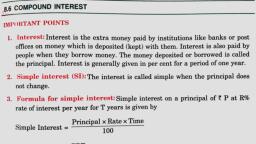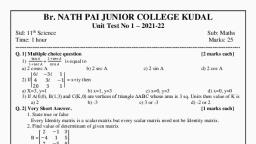Question 5 :
Find the value of $\dfrac{sin (-660^o) tan (1050^o) sec (-420^o)}{cos (225^o ) cosec (315^o) cos(510^o)}$
Question 7 :
The value of $\sin ^{ 2 }{ { 60 }^{ o } } +\tan { { 45 }^{ o } } -\text{cosec} ^{ 2 }{ { 45 }^{ o } } $ is
Question 10 :
If $\tan \alpha = 2$, then the value of $\dfrac{{\sin \alpha }}{{{{\sin }^3}\alpha + {{\cos }^3}\alpha }}$ is
Question 12 :
<span>Determine in which quadrant, angle </span><span>$210^o$ lies and </span><span>the sign of </span><span>$\cos 210^o$ in that quadrant.</span><br/>
Question 14 :
If $\displaystyle \frac{3\pi }{4}< \alpha < \pi $ then $\displaystyle \sqrt{2\cot \alpha +\frac{1}{\sin ^{2}\alpha }}$ is equal to<br><br><br><br>
Question 15 :
If $11 \sin^2 x + 7\cos^2x = 8$ then $x =$______
Question 16 :
If cos$\theta =\frac{2}{3}and \theta$ is in the 4th quadrant, then<br/>$\dfrac{sin\theta+tan \theta }{sin \theta-tan \theta}$is equal to<br/>
Question 17 :
In the 5th century who created the table of chords with increasing 1 degree?<br>
Question 18 :
Find the name of the person who first produce a table for solving a triangle's length and angles.<br>
Question 19 :
In a $\triangle ABC$, if $a=26, b=30, \cos C=\dfrac{63}{65}$ then $c=$
Question 20 :
If A lies between $270^o$ and $360^o$ and $sin A=\dfrac{-7}{25}$, then
Question 21 :
$\cos ^{ 4 }{ A } -\sin ^{ 4 }{ A } $ is equal to
Question 25 :
If $\tan\theta +\cot\theta =2$, then the value of $\tan^2\theta +\cot^2\theta$ is __________?
Question 26 :
If $\cos \left( {A + B} \right) = \dfrac{3}{5}$ and $\tan \,A\,\tan B = 2$, then <span>$ \cos A\cos B $</span>
Question 27 :
If $A + B + C = \pi $ then ${\sin ^3}A\cos \left( {B - C} \right) + {\sin ^3}B\cos \left( {C - A} \right) + {\sin ^3}C\cos \left( {A - B} \right) = 3\sin A\sin B\sin C$
Question 28 :
$\cos { \left( \dfrac { 3\pi }{ 4 } +x \right) } -\cos { \left( \dfrac { 3\pi }{ 4 } -x \right) } =\sqrt { 2 } .\sin { x }$<br/>
Question 29 :
If $\displaystyle \tan { \theta } =\frac { 1 }{ 2 } $ and $\displaystyle \tan { \phi } =\frac { 1 }{ 3 } $, then the value of $\displaystyle \theta +\phi $ is:
Question 31 :
If $\alpha$ and $\beta$ are angles in the first quadrant $\tan \alpha=\dfrac{1}{7}, \sin \beta =\dfrac{1}{\sqrt{10}},$ then using the formula $\sin$ $(A + B)= \sin A \cos B + \cos A \sin B,$ the value of $(\alpha+2\beta)$ is<br>
Question 33 :
The value of the expression $\left [ \cfrac{\sin^{2} 22^{0}+ \sin^{2} 68^{0}}{\cos^{2} 22^{0}+ \cos^{2} 68^{0}}+\sin^{2} 63^{0} + \cos 63^{0} \sin 27^{0} \right ]$ is<br/>
Question 34 :
In any triangle $ABC,$ is $\sin{A},\sin{B},\sin{C}$ are in $A.P.,$ then the maximum value of $\displaystyle\tan{\frac{B}{2}}$ is
Question 36 :
Let $n$ be a fixed positive integer such that $\displaystyle \sin { \left( \frac { \pi }{ 2n } \right) } +\cos { \left( \frac { \pi }{ 2n } \right) } =\frac { \sqrt { n } }{ 2 } $, then
Question 37 :
For $0 < \theta < \pi /2, tan \theta+tan 2\theta+tan3\theta=0$ if
Question 38 :
If $\tan\alpha$ and $\tan\beta$ are the roots of the equation $x^2+px+q=0 (p\neq 0)$, then
Question 39 :
$(\sin \theta + \cos \theta)(1 - \sin \theta \cos \theta)$ can be written as











































